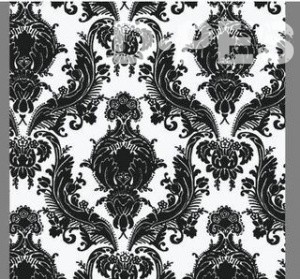What's the difference between wall graphics and wallpaper? All walled up in print
When people buy wide-format graphics they generally have a very particular purpose in mind. They may fancy draping signage all over an exhibition stand, or want to put up a bunch of POP signs at their tills, or even want a banner to greet a long-lost relative returning home. The difference between the multifarious types of printed matter lies in its purpose, which obviously varies.
The same is true for wall graphics and wallpaper. Both are intended to be on the wall, but wallpaper is more likely to be a relatively long-term interior decoration than something more transient. Wallpaper has a very particular purpose, for instance to hide an unattractive surface or add ambience to a space. Wallpaper also provides a backdrop for other stuff that might be hung on the wall, most of which will not necessarily be long term.

Walls can stay covered with such delights for many years
Few interior designers would use the term 'wall graphics' to describe pictures and similar wall hangings, but that is what they are. Wall graphics don't necessary fix absolutely to the wall, nor are they generally intended to hide blemishes. Wall graphics might also be used outside, for instance superwide-format work that hides unsightly building repairs.
Another distinguishing factor is the durability and lifespan expectations. Years ago wallpaper was expected to last forever and usually stayed in place when new wallpaper got put up. These days, and thanks largely to wide-format digital colour printing, the lifespan of wallpapers is getting shorter. The applications for wallpapers are pretty limited, but the scope of designs and substrate options gets bigger as consumers and interior designers get the idea about what is possible on a wide-format printer.
Wall graphics are far less easy to categorise: any graphic that can be hung on or otherwise attached to a wall. They have an immense range of purposes, which means that they are pretty much unconstrained by anything, be that longevity, size, dimension or cost. Banksy is the ultimate perpetrator of wall graphics, but he probably isn't all that interested in wallpaper.